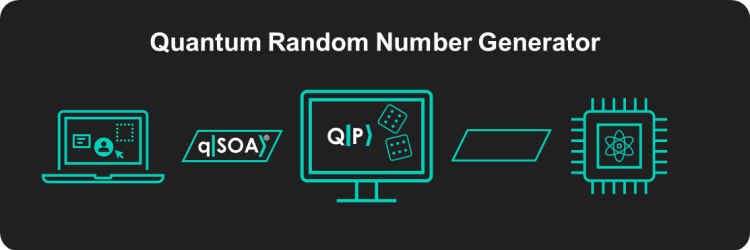José Luis Hevia and Alonso Martin-Toledano, members of aQuantum, have co-authored the article entitled “Practical Quantum Computing with QuantumPath®: 3-qubit random number generator”, published in The QPath® Blog.
Starting from a brief explanation about random numbers, as well as their differences with quantum random numbers, the authors present a complete example on the practical use of quantum random numbers showing the different stages of the work involved, from the Quantum Random Number Generator (QRNG) circuit, to its integration with a classic software application.
The structure of the article clearly shows the path proposed by the authors to expose the practical case of the content:
- Random and pseudo-random numbers
- Random number generation with quantum computing
- Practical example with QuantumPath®
- Practical example with qSOA®
- Prepare Everything: The QuantumPath® solution
- Context 1: visual development of assets. Integration with qSOA®
- Context 2: dynamic development of assets, full integration with qSOA®
Following this structure the authors show, step by step, how a QRNG circuit can be integrated with a classic software application using qSOA®. In this hybrid classical-quantum software solution the classic client will be responsible for calling the QRNG circuit, collecting and post-processing the data. Furthermore, with this solution, the client will be able to launch the execution in a totally transparent way, as many times as needed, on any of the quantum computers available on the QPath® platform.
This work is part of the “QHealth: Quantum Pharmacogenomics Applied to Aging”, 2020 CDTI Missions Programme (Center for the Development of Industrial Technology of the Ministry of Science and Innovation of Spain) and FEDER project.
The aQuantum Team congratulates Pepe and Alonso for the publication of this article.
You can see all the articles and other papers published by aQuantum here.


Recent Comments